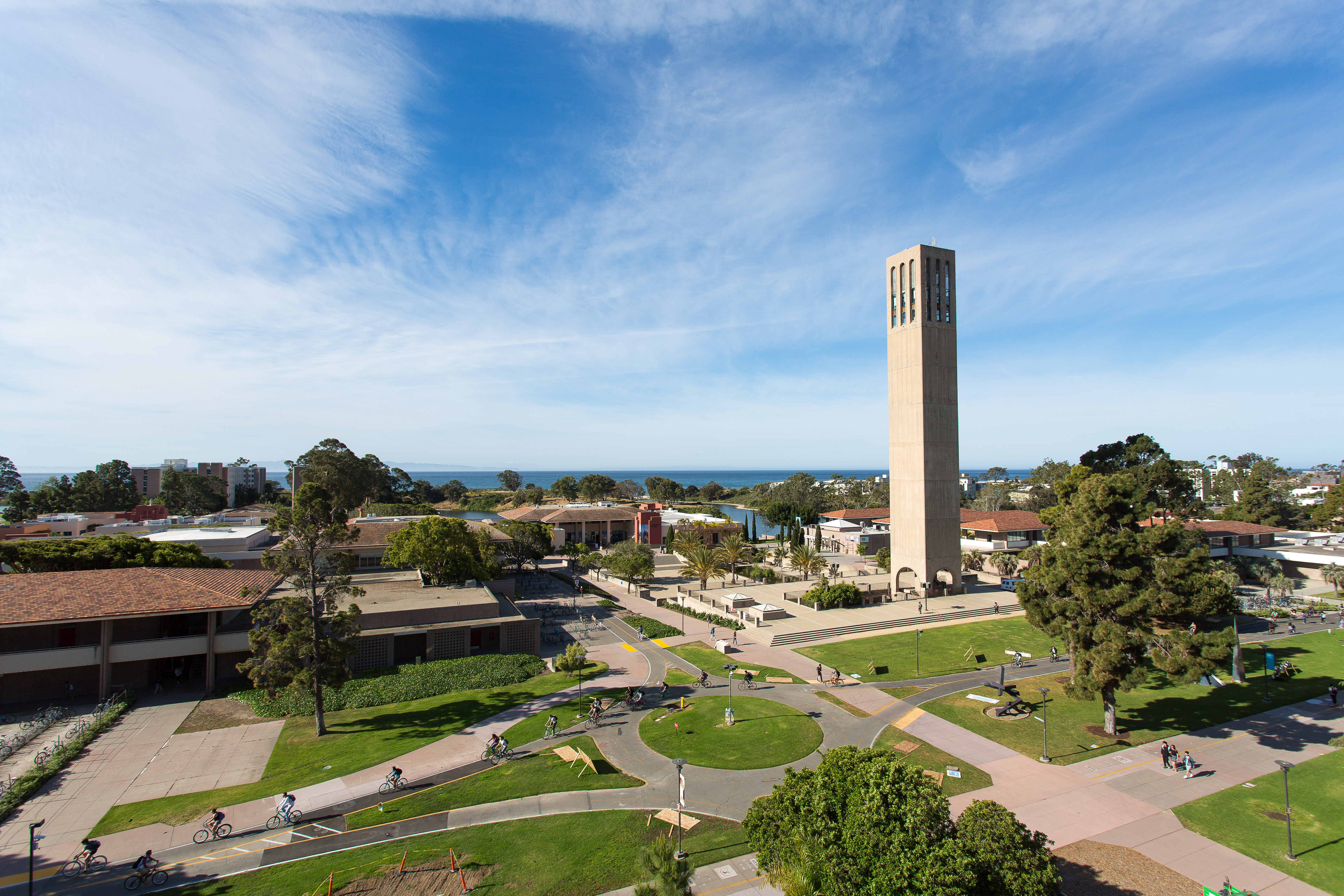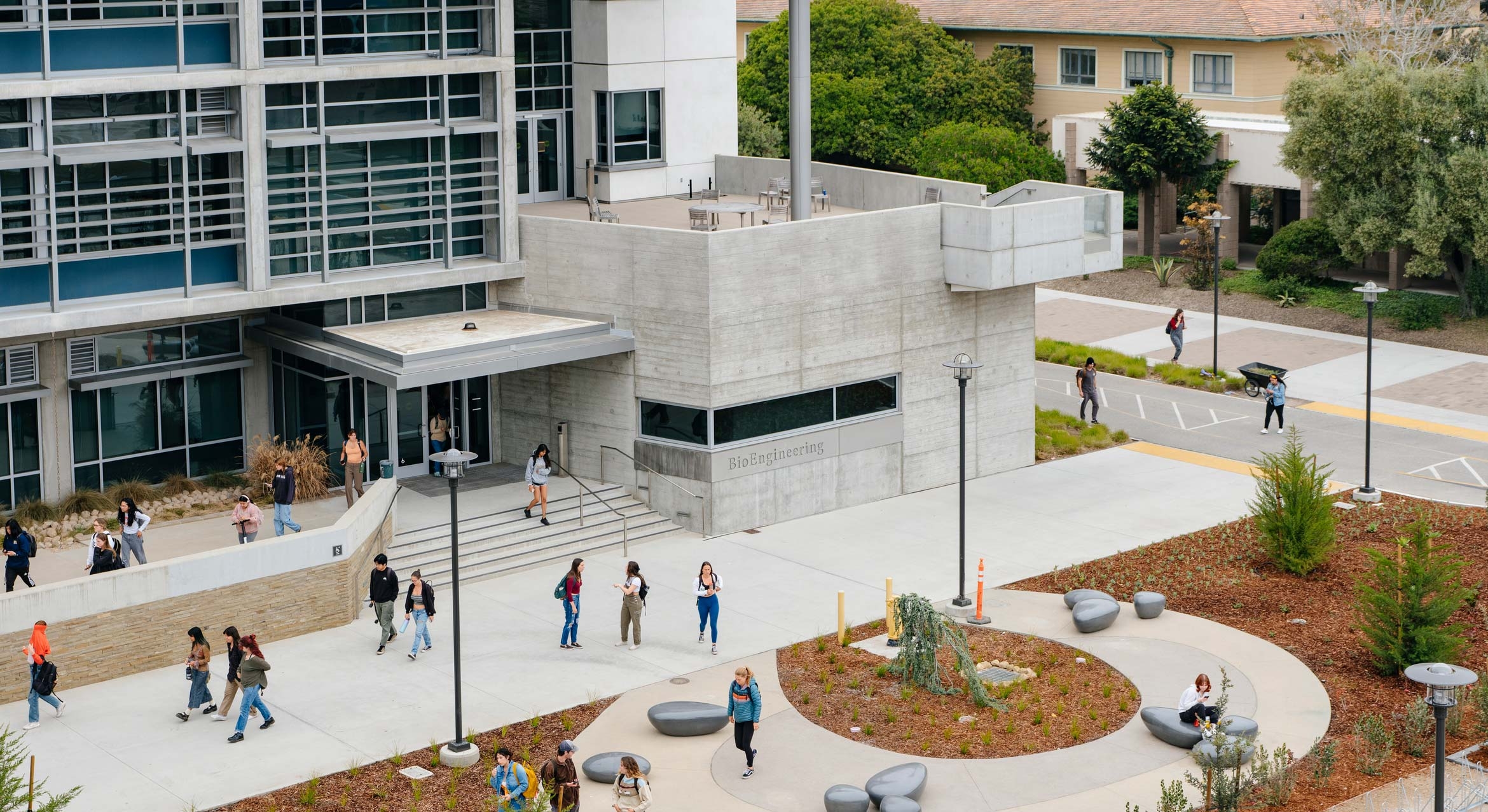
A Fire Safe Haven
Santa Barbara’s year-round sunshine and good weather make it an attractive tourist destination and a paradise for UC Santa Barbara’s campus community. However, the Southern Californian climate is inseparable with the cycle of wildfires that grip the state in late summer and early fall. Fortunately, the geography and meteorology of campus make it a safe haven from brush fires.
For a fire from the mountains to reach campus, it would require really strong winds. The blaze would have to spread all the way through Goleta and past, or around, the wetlands at the airport in order to make it to campus. “So, there are many barriers to overcome for a wildfire to reach campus,” said Professor Leila Carvalho, a meteorologist in the Geography Department who studies fire conditions in the Santa Barbara region.
UC Santa Barbara’s location provides a refuge from wildfires. The university protrudes into the ocean, which limits the direction from which a fire can approach. And the campus is flanked to the north by the airport and surrounding wetlands, not exactly a conduit for fire.
Wildfires in this region generally start in the mountains and inland valleys to the north and east. And flames have a harder time spreading through urban environments than wildlands, Carvalho explained. What’s more, on days with calm wind, fires tend to burn upslope, taking any potential blaze directly away from campus.
“We’re a lot less vulnerable than up in the mountains,” She said.
According to Carvalho, it would take pretty strong winds from the north for the campus to be in any sort of palpable danger from a wildfire. But even with sundowners — strong wind regimes similar to the Santa Anas — blowing a fire toward the coast, the flames would still need to traverse a large distance before threatening the university. All of Goleta lies in between a potential fire and the university itself. Campus is the very last point on a fires’ path before reaching the ocean.
What’s more, it’s difficult for a fire to transition into an urban area because the fuel regime is different, explained Professor Charles Jones, also a meteorologist in the geography department.
UC Santa Barbara’s microclimate also offers protection from wildfires. Given its location near the ocean, the university benefits from the sea breezes that blow from offshore. These bring cool, humid air to campus, and blow toward the mountains. The coast is also often visited by the morning fog from offshore, further cooling the area. The combined effects further shield campus from wildfire.
The campus architecture itself offers some protection from fire as well, noted UC Santa Barbara Adjunct Professor Max Moritz, one of the University of California’s wildfire specialists. Although the university was not specifically designed to be fire safe — like the Pepperdine or the Getty campuses — many of the buildings are naturally robust against fire. For instance, the campus’s familiar bespoke red cinder block is non-flammable.
No place in California is immune to wildfire. And the effects of smoke can travel far from their source, decreasing air quality dozens of miles away from a blaze. Nevertheless, UC Santa Barbara’s unique geography and weather afford it a measure of protection against wildfires that other locations don’t enjoy.



